Did you know that today there are just four remaining great ape species in the world? These magnificent animals possess certain human-like physical features, thanks to their genetic architecture that shares 96-98% DNA similarity with humans. For this reason, great apes are classified by the Latin name ‘hominids’. Interestingly, three out of four great ape species dwell in the African landscape, namely the chimpanzee, the gorilla, and the bonobo. The final species is geographically separated by thousands of miles from its cousins, living in the deep tropical rainforests of Indonesia and Malaysia in the Southeast Asia region: the orangutan.
Perhaps we should first take a step back to outline the differences between monkeys and apes. The difference is simple: a tail! Despite their many physical similarities, this one very distinctive characteristic divides these groups of animals: all monkeys have tails, apes do not. Next, why put the adjective “great” before the ape? It is because there is another ape group called the “lesser ape” or smaller ape. There are only two existing lesser ape species: gibbons and siamangs. Both are residents of tropical rainforest landscapes in Southeast Asia and are similarly closely related to humans at around 96% similarity. Compared to these smaller ape species however, great apes are equipped with a remarkable capability to interact with various objects around them, such as using objects as tools to feed themselves or to manoeuvre other items to achieve particular outcomes.
Orangutans, which share 97% of their DNA with humans, are physically striking animals. They are orange, fuzzy, and incredibly powerful! Adult males are as much as four times as powerful as a human. They can throw big branches from the forest canopy to the ground with one hand. Even most juvenile orangutans can crack open a coconut skin with a bare tooth! I was lucky enough to witness these facts myself during my work with the Borneo Orangutan Survival Foundation (BOSF) from 2015-2023 as one of the veterinarian team members. It was my very first job ever as veterinarian soon after my graduation! The BOSF is one of the only Indonesian non-governmental organisations that devotes itself to the conservation of this critically endangered species and its habitat.
Since 2016, the International Union for Conservation of Nature (IUCN) – the global authority on the status of the natural world – has classed the Bornean orangutan as a critically endangered species. This label is justified by three major aspects that contribute to orangutan population declines: habitat loss, habitat degradation, and hunting. The BOSF was founded in 1991 by the Indonesian Ministry of Forestry in collaboration with related stakeholders and international partners. It has two main sanctuary centres in Borneo that are currently taking care of about 400 orangutans. Not only acting as an orangutan sanctuary, the BOSF also runs habitat restoration projects that mainly deal with peatland landscape. In 2003, a research station was built to improve knowledge in the field of primate science. Now the BOSF has been working for over 30 years and the organisation has been of enormous value to the Bornean wildlife, serving a remarkable effort to rescue more than 1000 Bornean orangutan and successfully sending them back to the forest.
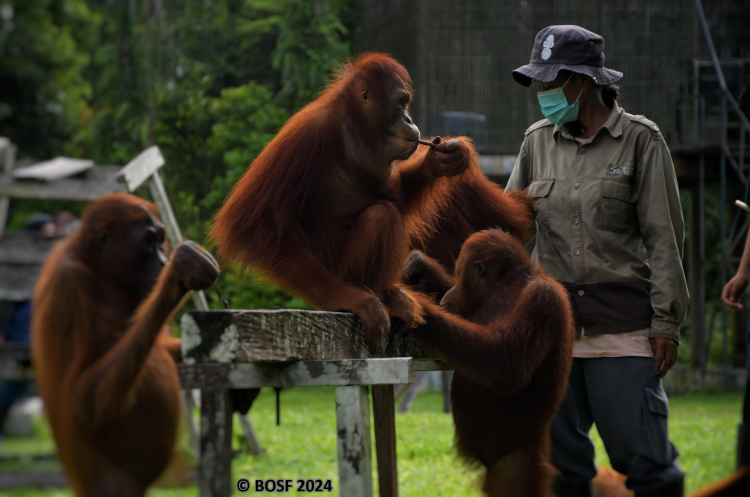
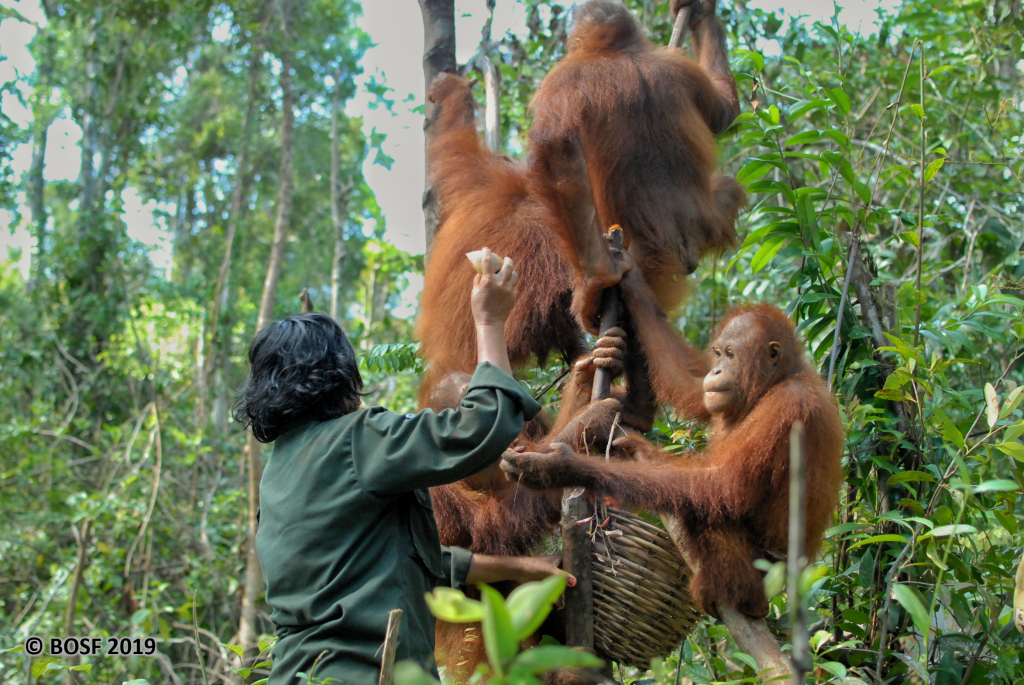
The Jungle School
Now the question is: Why do we have to conserve the orangutan and its habitat? Or great apes more generally?
Orangutans, and the other members of the great ape family, serve a crucial role in the ecosystem. They take part as an umbrella species, meaning that the existence of this species in the ecosystem will support other species indirectly, analogically just like an umbrella that protect us from the rain! More specifically for orangutans, they act as the major seed dispersal body in tropical rainforests. Orangutans are semi-solitary animals that spend approximately 40-60% of their time feeding, observed to feed on vast and various types of wild fruit and vegetations. Along the way, they will deposit seeds from the fruits that they eat via their droppings. Dispersing seed to the forest floor is a crucial process for forest longevity. Orangutans do what we call “forest farming”, which means to utilize resources responsibly and regrow everything in return. Adult male orangutans have been recorded to travel up to 5 km in a day! Meanwhile, adult females tend to stay within certain home ranges. Compared to other seed dispersal species like birds or bats, the orangutan is capable of both feeding on the most varied diet in large quantities, and of traveling significant distances from time to time. To have observed these incredible scenes in real life was one of the greatest experiences of my lifetime.
As a veterinarian, I used to have regular visits to the reintroduction forest deep in the island of Borneo. We needed to spend up to three days using both a car and boat just to get to the post-released monitoring (PRM) camp. One of these boat trips could take up to six hours! It was quite a challenging and exhausting trip. But trust me, once we got to the location, it was all worth it to experience this beautiful rainforest with all the wildlife inside it. The water is also so crystal clear that you can see some fishes swim across below your boat (not to mention there are several wonderful waterfalls as well). In the PRM camp, we would normally go inside the forest to try and locate orangutan position by catching their transponder signal using a receiver device. Prior to being released, the vet team puts the transponder just under the skin in the back area of the orangutan.
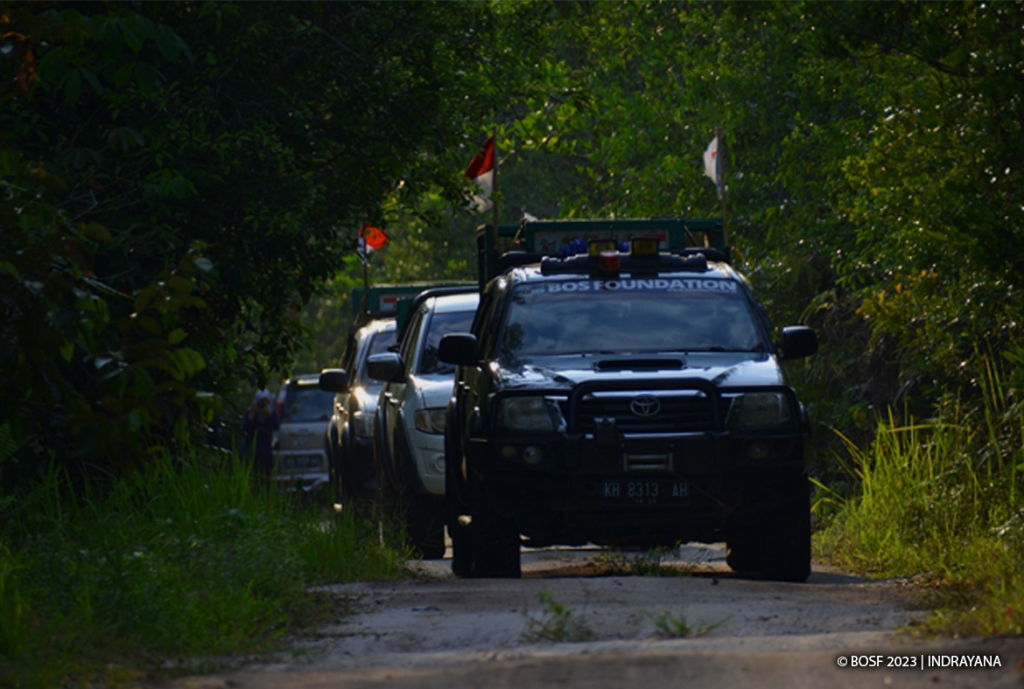
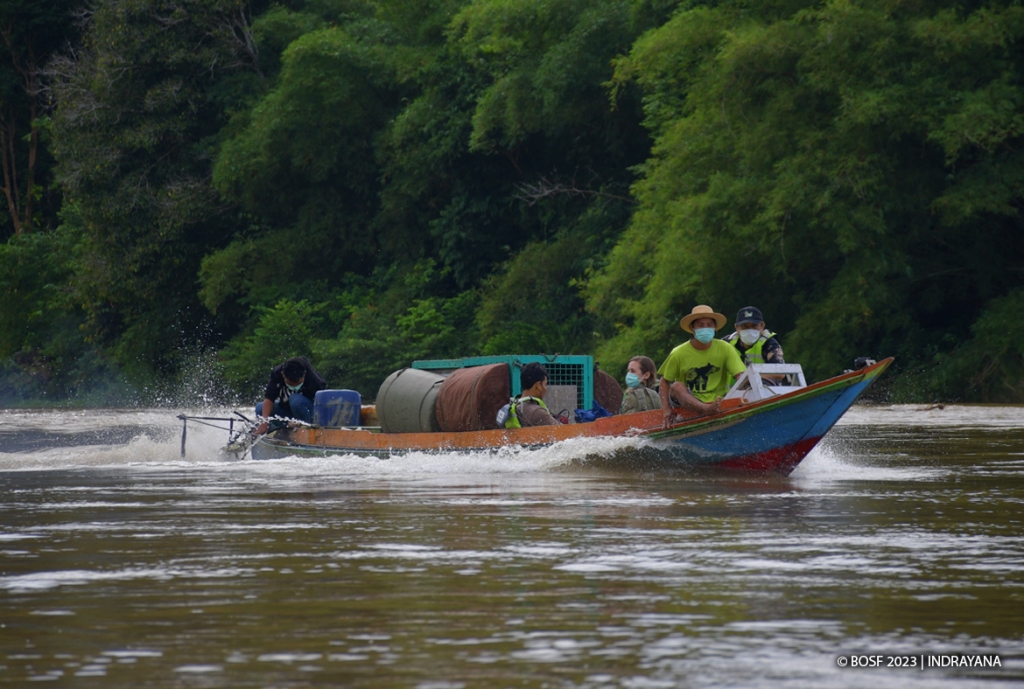
Searching for Orangutans
Of course, locating orangutan position is not as easy a job as it sounds. Sometimes we can find them quickly, but many times over, we need to walk very far (up to 6 kilometres per day) to find them. However, it is quite rewarding when we finally find an orangutan that has not been seen for years, now being present with a new baby; or a grown-up adult male that was released and last seen as a juvenile, now thriving. We start to collect behavioural data as soon as we find the orangutan, up until they make resting nest in the evening. The PRM team aim to collect daily observational data and analyse it weekly. My role as veterinarian is to justify the health status of the observed orangutan. If something bad happens, then we need to solidify an intervention plan as necessary.
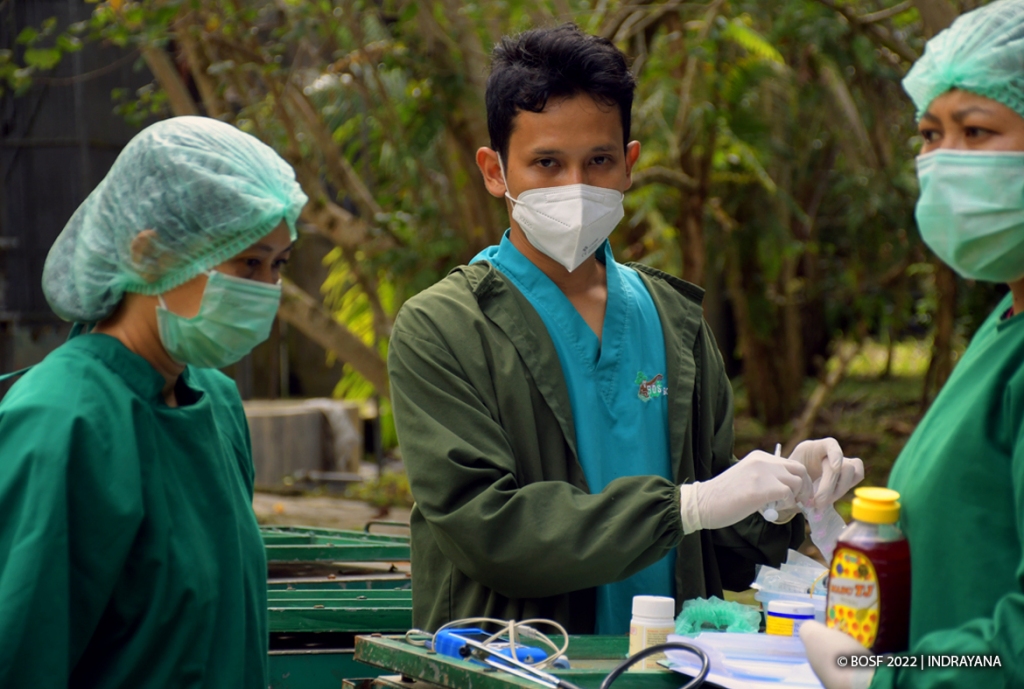
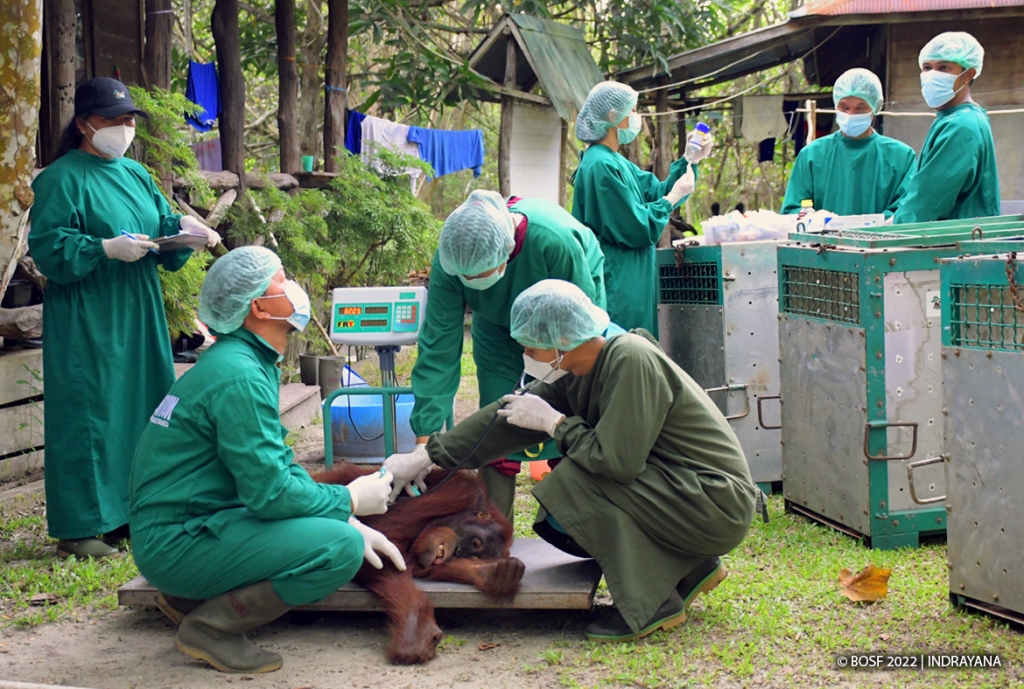
Vets in the field
Ultimately, protecting the orangutan will also automatically protect the forest and most species under the canopy. The impact is direct. And to be fair, there is no single species to date, including us the human, that can disperse hundreds of seeds through dozens of kilometres on daily basis in the forest like the orangutan does!
A valuable example that we can take from the orangutan way of life is that we are allowed to harvest goodness from the nature, in a responsible way, if we are also willing to give something back to maintain its sustainability. Moreover, orangutans also teach us one great lesson: hope. They have survived against great odds in life from a very young age, but never gave up thriving back once again. And as a person, I am more than grateful to have experienced this wonderful message by joining the BOSF for eight and half years. To date, the BOSF is the largest great ape centre in the world, marked by rehabilitating up to 500 orangutans in the sanctuary at one time. I believe this number is gradually decreasing over time as more and more orangutans are sent back to the wild, and fewer wild orangutans are displaced to the sanctuary as the result of habitat loss or human conflicts, so this decrease is a success story. Finally, the BOSF is a very nice place to learn not only about orangutan conservation, but also numerous points of interests: veterinary service, zoology, one health, spatial ecology, infectious disease, sustainable community development, public engagement and education practice, habitat restoration, and so on! This place is open for students, volunteers, researchers, and anyone who wants to know more about orangutan conservation. As we become more aware of sustainability, it is worth supporting conservation acts in many ways as possible, in different parts of the world.
All photos have been supplied by the BOSF. Find out more about the organisation and their wonderful conservation work here.
Gregg Poetra is an Indonesian Master’s student in Quantitative Methods in Biodiversity, Conservation and Epidemiology (QMBCE). Gregg worked as a veterinarian at the BOSF from 2015-2023.